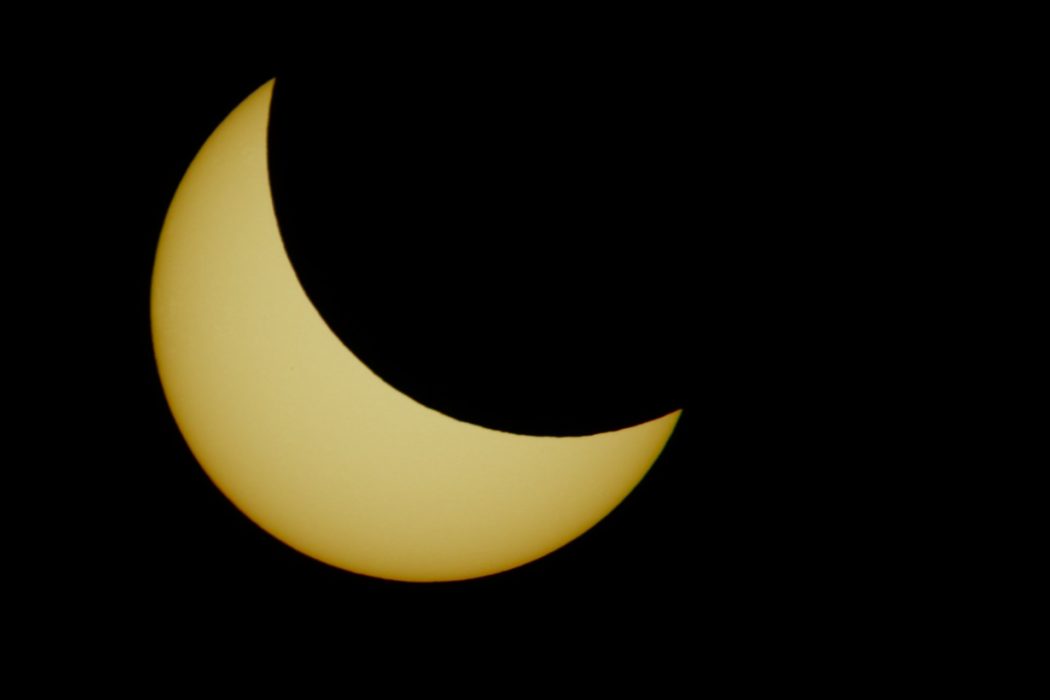
by Alex Perera and Colin McCormick – March 31, 2015 As electric grids around the world rely more and more on solar and wind power, there are concerns about how they’ll handle renewable energy’s sometimes inconsistent generation. Unlike conventional power plants, which produce energy on a fixed schedule, renewables can’t be fully controlled because they rely on the available sunlight and wind speed.
Grid operators’ response to Europe’s recent solar eclipse, though, proves that these challenges can be overcome. Grid operators are becoming more sophisticated at predicting and responding to sudden drops and spikes in wind and solar generation—keeping the lights on even during cloudy, breeze-free days.
Solar Eclipse Causes One of the Largest Swings in Power Production
The solar eclipse, a rare and predictable event where the moon blocks out sunlight, took place on the morning of March 20, and lasted for about an hour and a half. During that time, approximately 17 gigawatts (GW) of solar generation went offline in Europe (almost equal to the total amount of solar installed in the United States), and 25 GW came back online after the eclipse was over. The eclipse caused one of the largest swings in power production that grid operators have ever faced because it reduced the availability of solar power so quickly.
The eclipse was predicted long in advance, and grid operators spent many months planning for the event. They successfully handled the solar generation swings by using traditional power plants and pumped hydro storage to make up for the temporarily reduced solar generation. They then gradually ramped down the generators on a carefully timed schedule as the eclipse ended and solar generation returned, avoiding interruptions in the power supply.
The German grid was particularly affected, as the country has the highest percentage of solar photovoltaics (PV) in the world. The total German PV capacity was 38.5 GW in 2014, providing 6.9 percent of the country’s total electricity consumption for the year. On some sunny days, solar meets more than 35 percent of the country’s electricity consumption needs.
Grid Operators Are Getting Better at Planning
While the solar eclipse led to a rapid swing in power production—providing an important test for grid flexibility—operators must also manage renewable energy fluctuations on a daily basis. Wind and solar forecasting techniques are becoming more and more precise, giving grid operators more lead time to prepare for both daily variations and unusual events like the eclipse.
They’re also getting better at finding ways to accommodate major fluctuations like those caused by the eclipse. Traditionally, fossil fuel plants operate as consistent power generators, and are not designed to make large or fast changes in their output. With the rise of renewable power, they’re increasingly shifting from a main power source to a back-up role. While this involves costs to plant owners, the eclipse over Europe showed how these plants could play a supporting role in the integration of renewables, which can lower overall costs to consumers.
A Renewable Energy Revolution
Ultimately, the successful performance of the European grid during the eclipse shouldn’t come as a surprise. The International Energy Agency released a study last year finding that for any country, integrating up to 30 percent renewables into their power systems is possible without much additional cost. In the United States, the National Renewable Energy Laboratory has consistently found that high levels of renewables can be integrated into the grid. And despite having almost twice as much solar generation, the German electric grid is 10 times more reliable than the U.S. grid.
The European solar eclipse serves as a powerful reminder of what many already know: The grid is ready for a future powered by clean energy. And with declining costs of renewables, consumers can be the beneficiary.
This article was originally posted at WRI Insights.
]
 Alternative Energy HQ solar power for homes, wind energy, and bio fuel issues
Alternative Energy HQ solar power for homes, wind energy, and bio fuel issues






